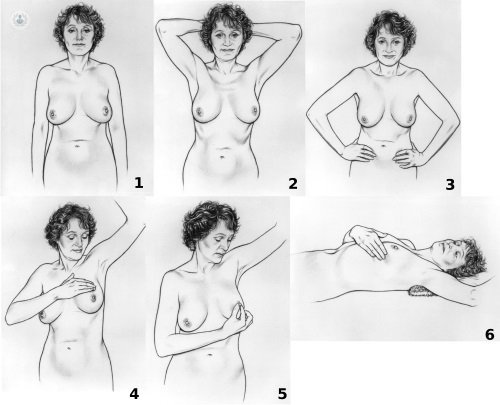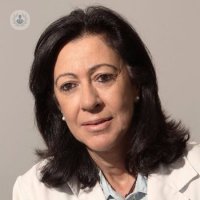How and when to do breast self-examination
Written by:Breast self examination is done by women in order to detect changes or alterations, both visually and physically.
The first thing to do is get in front of a mirror and, with arms at the sides of the body, see if there are changes in the shape or size, if the skin is smooth or have a crease or roughness; if the outline is regular, etc.. Do not forget the nipples, the areolas and see if there are changes in the size and shape; if there are wounds, scabs, and if you have fluid discharge.
Then we raise the arms and armpits moms and compared to detect differences. After intertwine hands in front of chest and we force out to contract the muscles of the chest, raising his arms to observe any alteration in the skin or contour.
Finally, lying on the bed with his back against a cushion or slightly elevated, palpate the left breast with his right hand, and with outstretched fingers gently pressed the breast. We must never explore pinches, and it is important to follow a protocol to do always the same and not to forget any quadrant. With the right breast we do the same but with his left hand, and do not forget the armpits.

How often we realize ourselves Breast self - examination
We must seize to start doing self - examination for the first time after breast revision, because the breast is not smooth. We must know what our breast; this will take us a few-months, and finally the know and know detect any changes.
Breast self - examination should be done every month, but only after the rule, as before (specifically from ovulation to menstruation), can become congested, inflamed or retain fluid and can give us a scare without.
At menopause we will choose a day of the month to not forget.
When to See a specialist in Gynecology
There are several signs and symptoms that should alert women and see your gynecologist :
- The presence of a lump in the breast or armpit. When a lump is new, it does not disappear or change with the cycle appears, it may indicate pathology and is necessary to clarify whether it is benign or not.
- The discharge from the nipple may indicate, especially if it is dark or bloody, a benign entity, such as papilloma virus , but it can also be a malignant process.
- Sinking or retractions nipple or areola-nipple unit; the breast should be evaluated if there is something behind that is pulling.
- Desquamation, injury and / or scabs on the nipple; if not for dermatologic cause, we must discard Paget 's disease, a rare cancer mom.
- Hardening, dimpling, skin folds or contour, can also suggest breast pathology and must be evaluated.
- Any change in color, temperature, inflammation, can be almost always signs of a benign condition called mastitis, but you have to make a differential diagnosis with inflammatory breast cancer is also rare.
Chest pain
Finally, I want to make a special section on breast pain, which is the most common symptom and that scares the woman being one of the first reasons that women go to the specialist.
Generally, and in most cases, breast pain is not indicative of a cancer. The breast is innervated by the cervical plexus and intercostal, so any alteration to these levels can give reflection of pain in the breast. In addition, there is the hormonal factor. We have already commented that ovulation cycles to rule the breast becomes inflamed (etc.) can hurt, 'and a lot !!
However, if the pain is persistent and has no relation to either cycles or musculo - skeletal disorders with, we must consult the specialist.
Let 's not forget: besides worry, we must address.



